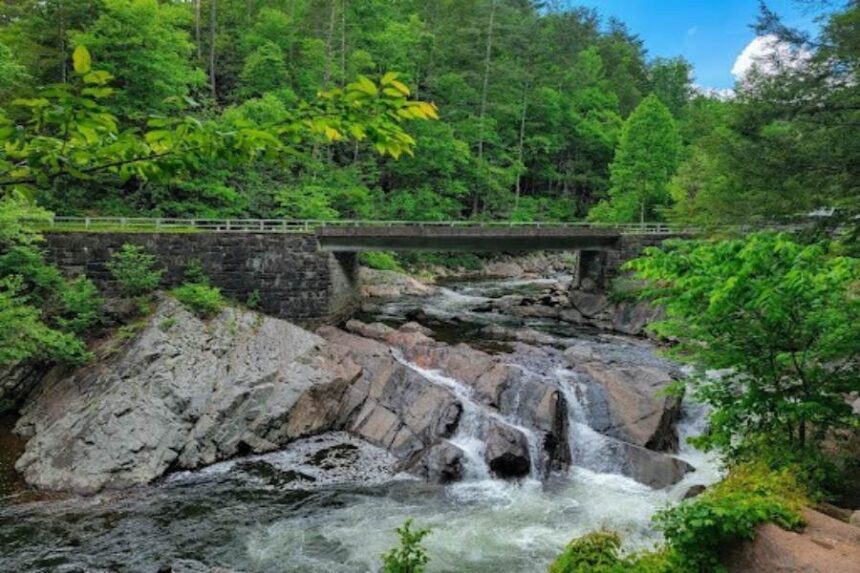Mountain getaways don’t have to mean maxing out your credit card or stressing over every meal and activity. You can pack your days with fresh air, great views, and good memories without draining your wallet. The best part? Sometimes, the simplest plans turn out to be the most rewarding.
- Choosing a Stay That Balances Comfort and Cost
- Packing Gear You Already Own
- Selecting Free or Low-Cost Activities
- Using Public or Shared Transport
- Combining Shorter Excursions
- Mapping Routes to Cut Fuel Costs
- Prioritizing Natural Attractions
- Finding Scenic Spots Without Fees
- Limiting Souvenir Purchases
- Choosing Lightweight Gear
- Using Multi-Purpose Clothing
- Bringing Snacks and Drinks for Day Trips
Take Gatlinburg, for example. This lively little mountain town offers all the charm you could ask for, along with plenty of budget-friendly ways to fill your days. You can wander, explore, and unwind while still keeping costs in check. A few smart choices before you leave home can make all the difference once you’re there.
Choosing a Stay That Balances Comfort and Cost
Where you rest your head at night sets the tone for the whole trip. A cozy spot with the right mix of comfort and price can help you relax and enjoy your surroundings without worrying about how much you’re spending. Look for places that throw in handy extras like parking or even a spot close to the sights, so you don’t have to spend on transportation.
If you want to be right in the middle of things, Old Creek Lodge is worth a look. It’s just steps from some of the best free things to do in Gatlinburg, meaning you can step outside and start exploring without even touching your car keys. Whether it’s access to Gatlinburg’s trolley system or enjoying the sound of the river nearby, you can soak up the mountain atmosphere without paying for extra activities every day.
Packing Gear You Already Own
Before you head out, check your closets, shelves, and storage bins. Chances are you already have plenty of gear for your trip, like hiking shoes, reusable water bottles, or a backpack that’s been gathering dust. Packing what you already own saves you from last-minute purchases and frees up money for things you actually want to spend on.
The bonus? You know this gear works for you. No worrying about new shoes giving you blisters halfway through a trail or a cheap water bottle leaking all over your pack.
Selecting Free or Low-Cost Activities
You don’t need a big budget to have a big adventure. Mountain towns are full of experiences that cost little to nothing, think hiking, exploring scenic overlooks, or finding the perfect spot for a picnic. A day out in nature can be just as memorable as a pricey tour.
Around Gatlinburg, you can easily fill your days without spending much at all. From wandering into the Great Smoky Mountains National Park to visiting scenic riversides, there’s always something to see. Plus, nature never charges admission, so you can go back as often as you like.
Using Public or Shared Transport
Parking in busy areas can be pricey, and driving everywhere eats into your budget faster than you might think. Public transportation or shared rides can help you get from place to place without the headache of finding a spot for your car. It’s also a fun way to see more of the area without having to focus on the road.
Gatlinburg’s trolley system is a budget-friendly gem. For just a few dollars, you can hop on and off all day, checking out attractions, grabbing a bite, or heading to a trailhead.
Combining Shorter Excursions
Short day trips can be a great way to explore more without spending more. Instead of planning one big, expensive outing, you can schedule a few smaller adventures over your stay. That way, you get variety without blowing your budget all at once.
In the mountains, it’s easy to find short drives or hikes that bring you to fresh scenery. You might spend the morning in a quiet valley, then head to a viewpoint in the afternoon.
Mapping Routes to Cut Fuel Costs
Gas prices can be unpredictable, and mountain roads sometimes mean longer drives than expected. Planning your routes ahead of time can help you see more while using less fuel. Group nearby spots together so you’re not zigzagging across the map.
A simple look at a map can reveal hidden efficiencies. Maybe there’s a scenic loop that passes through multiple points of interest, or a back road that’s quicker and more beautiful. Less driving means less gas and more time enjoying the trip.
Prioritizing Natural Attractions
Some of the most unforgettable mountain experiences don’t cost a dime. Waterfalls, mountain trails, and panoramic overlooks are often free to visit and give you that “wow” factor that’s hard to beat.
In and around Gatlinburg, natural attractions are practically everywhere. The Great Smoky Mountains National Park alone offers dozens of spots that could fill your itinerary without touching your wallet. The scenery changes with the seasons, so every visit feels different.
Finding Scenic Spots Without Fees
It’s tempting to head to the big-ticket attractions, but there’s a certain charm in seeking out less crowded, free spots. Scenic pull-offs along mountain roads, quiet picnic areas, or hidden overlooks can feel just as special.
Often, locals know about these little treasures, so it’s worth asking around. You might stumble across a peaceful river bend or a wide-open meadow that’s not in the guidebooks.
Limiting Souvenir Purchases
Souvenirs can be fun, but they can also eat into your travel funds quickly. Choosing just one or two items that truly remind you of the trip helps keep spending under control.
A handmade ornament, a locally crafted mug, or a photo you frame when you get home can hold more value than a bag full of generic trinkets.
Choosing Lightweight Gear
Heavy luggage can be a hassle, especially if you’re moving around or flying. Lightweight gear helps keep you comfortable and avoids any extra baggage fees.
Think about items that fold, roll, or pack small without losing usefulness. The less you have to lug around, the more energy you can put into actually enjoying the retreat.
Using Multi-Purpose Clothing
Packing clothes that can work in different settings, like a jacket that’s good for hiking and casual dinners, saves space and money. It also means fewer items to pack and keep track of.
Neutral colors and simple designs work well for this. A pair of hiking pants that also look fine for walking around town is one less thing in your suitcase.
Bringing Snacks and Drinks for Day Trips
Stopping at cafés and shops during the day can be tempting, but those quick snacks add up. Packing your own for hikes and drives keeps costs low and saves you time hunting for food in unfamiliar spots.
Trail mix, fresh fruit, or sandwiches made in your lodging’s kitchen can go a long way. You can still splurge on a special treat or meal without feeling like you’ve overspent.
A mountain retreat doesn’t have to mean spending a fortune. Thoughtful planning, a focus on what matters most, and a willingness to enjoy the simple pleasures can create a trip you’ll remember long after it’s over.




